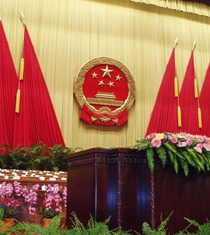China Facts +

-
Great Wall
The Great Wall (长城) rises from Shanhaiguan, northeast of Qinhuangdao City in Hebei Province on the east coast and falls with the contours of the mountains westwards, crossing nine provinces, municipalities and autonomous regions over 6,700 kilometers, to end at Jiayu Pass, southwest of Jiayuguan City in Gansu Province.

-
Peking Opera
Peking opera is the most representative of all Chinese traditional dramatic art forms.

-
Ceramic in China
Pottery making began to develop in China during the New Stone Age some 10,000 years ago.

-
CPC Central Committee
According to the Constitution of the Communist Party of China (CPC), the highest leading body of the Party is the National Congress and the Central Committee it elects, and all the constituent organizations and members of the Party are subordinate to the CPC National Congress and the Central Committee.

-
National People's Congress
The National People's Congress (NPC) is the national legislature of the People's Republic of China.

-
Palace Museum
Located in the center of Beijing, the Palace Museum (故宫博物院), historically and artistically one of the most comprehensive museum in China, was established on the basis of the Forbidden City, a palace of the Ming and Qing dynasties (1368-1840), and their collection of treasures.

